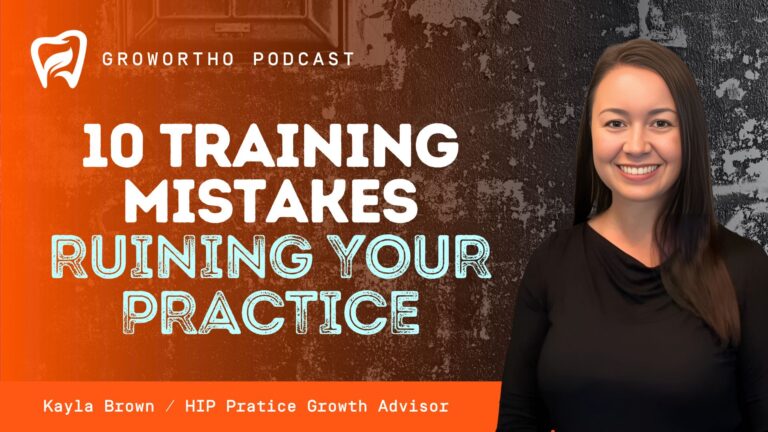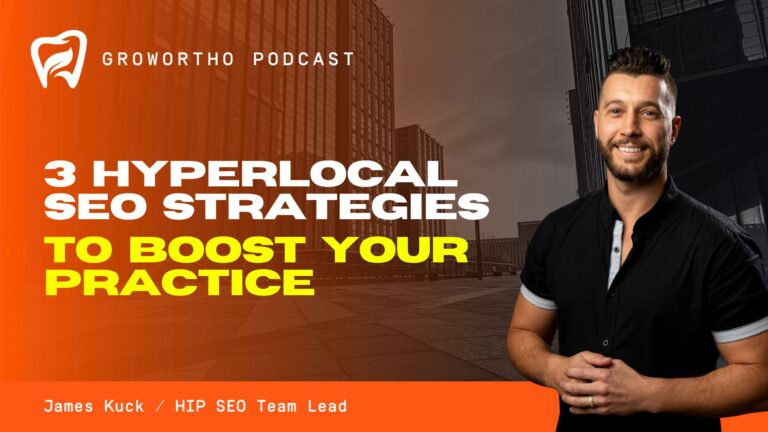Subscribe: RSS
Most young orthodontists are told to grow. Faster. Bigger. More locations. More chairs. But no one talks about what happens when you actually succeed—when you’ve grown a large, high-performing practice only to discover it’s now too big to sell.
That’s exactly the position Dr. Sami Webb found herself in after two decades of building one of the most respected orthodontic groups in the Midwest. And her story carries a warning for every early-stage orthodontist: If you don’t plan your exit early, your own success can become your biggest obstacle.
The Growth Trap: Why Success Can Limit Your Options
Dr. Webb started small—one day a week in a hospital-based clinic. Over the years, her practice exploded into six locations. But when she began thinking about her eventual exit, she realized the hard truth: there weren’t any buyers who could afford what she’d built.
Not because it wasn’t valuable—but because it was too valuable.
Today’s young orthodontists are coming out of school with mountains of debt. Even the most talented doctors often can’t take on the financial burden of purchasing a large-scale practice. And even if they could, few are ready to step into the operational complexity of running it.
“I had built my practice too large to sell. Associates couldn’t afford it—and they couldn’t run it either,” Dr. Webb shared. “That’s when I realized I had to shift my mindset and consider a new model.”
The Orthodontic Landscape Has Changed—Have You Noticed?
In the past, most doctors followed a simple path: start your own practice or buy into an existing one. That’s how Dr. Webb began. But those days are quickly fading.
With the rise of DSOs and OSOs, valuations have shot up. Fewer practices are for sale, and the ones that are often carry price tags that rule out early-career orthodontists. Many doctors now hold out for corporate-level exits, making traditional transitions rarer.
That shift is why many orthodontists—especially those who didn’t plan ahead—now feel stuck. Trapped between wanting to exit and realizing no one can step in and take over.
When Should You Start Planning Your Exit? Yesterday.
Dr. Webb’s advice for early-stage practice owners is simple but sobering:
“Most of us are achievers. We’re just wired to go. But if you wait until you’re exhausted to get help, you’re already too late.”
She’s right. Burnout is real—and so is regret. Many doctors run hard for 10–15 years, only to look up and realize they haven’t built anything that can operate without them. That makes transitions hard, even dangerous, for your team and your legacy.
Whether it’s bringing in an associate, exploring partnership models, or joining a specialty partnership organization (SPO) like EPIC4, you must start building your next step long before you need it.
The Cost Of Not Planning: A Personal Story
When Dr. Webb gave birth to her son, she was running six locations, managing 16 team members, and seeing thousands of patients. Her maternity leave? Two weeks. No coverage. No backup.
That’s what happens when you scale without support. You become irreplaceable—and that’s not a compliment. It’s a liability.
Even the smallest things became calculated risks. A family ski trip? She stayed in the clubhouse. One wrong landing, one broken wrist, and the entire business could grind to a halt.
“There’s a huge risk in being a solo practitioner without support. That’s why more and more doctors are looking at partnerships—not just for growth, but for sustainability.”
What You Can Do Right Now
You don’t have to be stuck. You just have to start now. Here’s how:
- Audit your practice’s scalability: Could someone else run what you’ve built without you?
- Map your 5- and 10-year vision: Include your ideal exit strategy—whether that’s selling, partnering, or bringing in a junior doctor.
- Build your leadership pipeline: Don’t wait until you’re desperate to find an associate. Start identifying and mentoring future leaders now.
- Explore alternative models: SPOs like EPIC4 offer ways to preserve your legacy while creating an exit path that doesn’t involve corporate takeover.
Real Success Lasts Without You
Too often, we define success by size: more chairs, more locations, more production. But real success—lasting success—is about building something that outlives you.
It’s about preparing your practice, your people, and your future successor for a handoff that doesn’t just preserve what you built—but elevates it.
So before you put your head down and keep grinding, ask yourself:
What am I building—and who will carry it forward?



